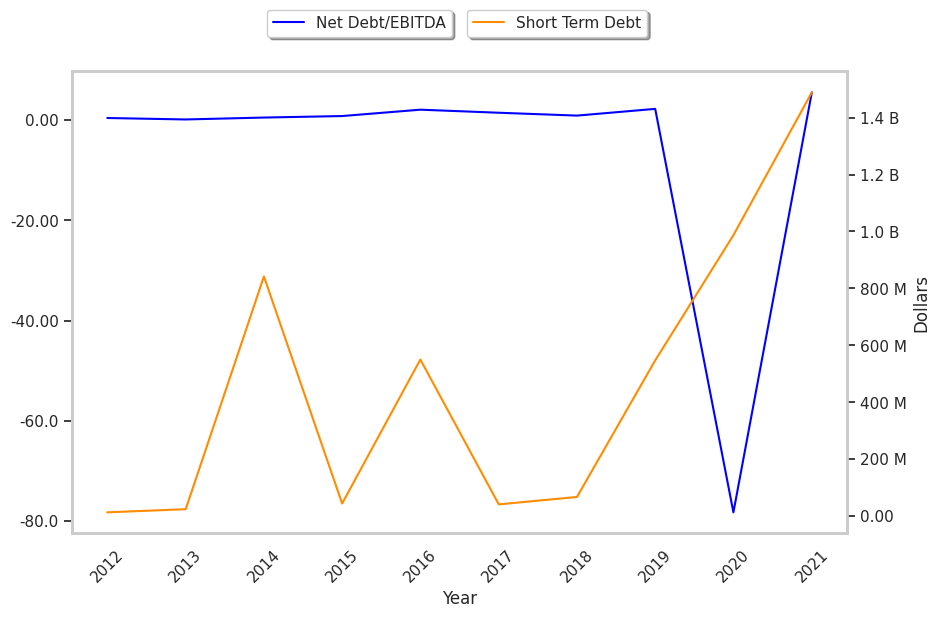Phillips 66 (PSX) stock climbed 1.0 % this morning. According to our metrics, the company seems fairly valued at today's prices. In the below analysis, we will put Phillips 66's valuation in the context of its poor growth indicators and mixed market sentiment, which are also strong drivers for share price.
Phillips 66 operates as an energy manufacturing and logistics company in the United States, the United Kingdom, Germany, and internationally. The large-cap Energy company is based in Houston, United States and has 13,000 full time employees.
PSX's P/E Ratio Is Better Than the Sector Average
Compared to the Energy sector's average of 7.54, Phillips 66 has a trailing twelve month price to earnings (P/E) ratio of 4.8 and an expected P/E ratio of 8.4. P/E ratios are calculated by dividing the company's share price by its trailing 12 month or forward earnings per share, which stand at $23.19 and $13.35 respectively.
Earnings represent the net profits left over after subtracting costs of goods sold, taxes, and operating costs from the company's recorded sales revenue. One way of looking at the P/E ratio is that it represents how much investors are willing to pay for every dollar's worth of the company's earnings. Since Phillips 66's P/E ratio is lower than its sector average, we can deduce that the market is undervaluing the company's earnings.
Phillips 66 Has a Negative Rate of Expected Growth
P/E ratios are falling out of favor as a means of valuing stocks for a number of reasons. Earnings are subject to manipulation, and the P/E ratio is static in time, in the sense that it doesn't take into account expected long term growth of the company. Although estimated long terms growth rates are just as easily manipulable as earnings, dividing Phillips 66's P/E ratio by its expected growth rate can tell us the relative market valuation of the company in relation to expected earnings growth.
The resulting metric, called price to earnings growth (PEG) is -0.88 for Phillips 66. Since the PEG ratio is negative and the company's reported earnings per share are positive, we can deduce that the company's expected growth rate is negative. Needless to say, this is a red flag for investors with a long term horizon.
PSX Has an Average P/B Ratio
Traditionally, stock pickers used to focus primarily on finding issues that were trading significantly below their tangible asset value, to guarantee themselves a margin of safety. But such an approach would screen out many valuable securities because many profitable businesses -- especially those that heavily leverage information technology -- simply do not have many tangible assets compared to more capital intensive companies.
Therefore, modern value investors tend to focus less on absolute price to book value (P/B) ratios. Instead of singling out stocks with a P/B ratio of less than 1, they will compare the target company against its peer group. For Phillips 66, the P/B value is 1.66 while the average for the Energy sector is 1.68.
PSX's Weak Cash Flow Generation Is Troubling
The table below shows that Phillips 66 is not generating enough cash. A well run company will generally have cash flows that reflect the strength of its underlying business, and in Phillips 66's case, free cash flow is growing at an average rate of 0.0% with a coefficient of variability of 15795022180.4%. We can also see that cash flows from operations are evolving at a 0.0% rate, versus 0.0%:
| Date Reported | Cash Flow from Operations ($ k) | Capital expenditures ($ k) | Free Cash Flow ($ k) | YoY Growth (%) |
|---|---|---|---|---|
| 2022-02-18 | 6,017,000 | -1,833,000 | 7,850,000 | 57.63 |
| 2021-02-24 | 2,111,000 | -2,869,000 | 4,980,000 | -42.06 |
| 2020-02-21 | 4,808,000 | -3,787,000 | 8,595,000 | -15.74 |
| 2019-02-22 | 7,573,000 | -2,627,000 | 10,200,000 | 88.75 |
| 2018-02-23 | 3,648,000 | -1,756,000 | 5,404,000 | -11.16 |
| 2017-02-17 | 2,963,000 | -3,120,000 | 6,083,000 |
Phillips 66 Is Not a Profitable Business
If you are looking to make PSX a long term investment, its weak margins may give you cause for concern. As you can see from the below, the company is generally losing money on each sale it makes. That being said, stock prices in the short term can be independent of a company's margins, and Phillips 66's management may be able to make the business profitable in the future.
Phillips 66's Gross Margins
| Date Reported | Revenue ($ k) | Cost of Revenue ($ k) | Gross Margins (%) | YoY Growth (%) |
|---|---|---|---|---|
| 2022-02-18 | 111,476,000 | -102,102,000 | 8 | -20.0 |
| 2021-02-24 | 64,129,000 | -57,707,000 | 10 | -9.09 |
| 2020-02-21 | 107,293,000 | -95,529,000 | 11 | -21.43 |
| 2019-02-22 | 114,156,000 | -97,930,000 | 14 | -41.67 |
| 2018-02-23 | 104,101,000 | -79,409,000 | 24 | -11.11 |
| 2017-02-17 | 85,703,000 | -62,468,000 | 27 |
Phillips 66's Operating Margins
| Date Reported | Total Revenue ($ k) | Operating Expenses ($ k) | Operating Margins (%) | YoY Growth (%) |
|---|---|---|---|---|
| 2022-02-18 | 111,476,000 | -8,930,000 | 0 | 100.0 |
| 2021-02-24 | 64,129,000 | -7,988,000 | -2 | -166.67 |
| 2020-02-21 | 107,293,000 | -8,528,000 | 3 | -57.14 |
| 2019-02-22 | 114,156,000 | -8,361,000 | 7 | 133.33 |
| 2018-02-23 | 104,101,000 | -21,196,000 | 3 | 0.0 |
| 2017-02-17 | 85,703,000 | -20,790,000 | 3 |
Phillips 66's cost of revenue is growing at a rate of -0.0% in contrast to 12.9% for operating expenses. Sales revenues, on the other hand, have experienced a 0.0% growth rate. As a result, the average gross margins growth is 0.8 and the average operating margins growth rate is -28.5, with coefficients of variability of 50.5% and 131.9% respectively.
We See Mixed Market Signals Regarding PSX
Phillips 66 has an average rating of buy and target prices ranging from $144.0 to $115.0. At its current price of $111.74, the company is trading -13.49% away from its target price of $129.17. 2.2% of the company's shares are linked to short positions, and 72.9% of the shares are owned by institutional investors.
| Date Reported | Holder | Percentage | Shares | Value |
|---|---|---|---|---|
| 2023-06-30 | Vanguard Group Inc | 9% | 41,349,410 | $4,620,382,985 |
| 2023-06-30 | Blackrock Inc. | 8% | 36,736,742 | $4,104,963,472 |
| 2023-06-30 | State Street Corporation | 7% | 31,213,866 | $3,487,837,320 |
| 2023-06-30 | Wells Fargo & Company | 4% | 17,121,154 | $1,913,117,711 |
| 2023-06-30 | Wellington Management Group, LLP | 2% | 10,931,521 | $1,221,488,133 |
| 2023-06-30 | Geode Capital Management, LLC | 2% | 9,745,974 | $1,089,015,113 |
| 2023-06-30 | Aristotle Capital Management, LLC | 2% | 7,822,277 | $874,061,215 |
| 2023-06-30 | Barclays Plc | 2% | 7,451,470 | $832,627,241 |
| 2023-06-30 | Morgan Stanley | 1% | 6,630,314 | $740,871,272 |
| 2023-06-30 | Bank of America Corporation | 1% | 6,198,531 | $692,623,840 |



